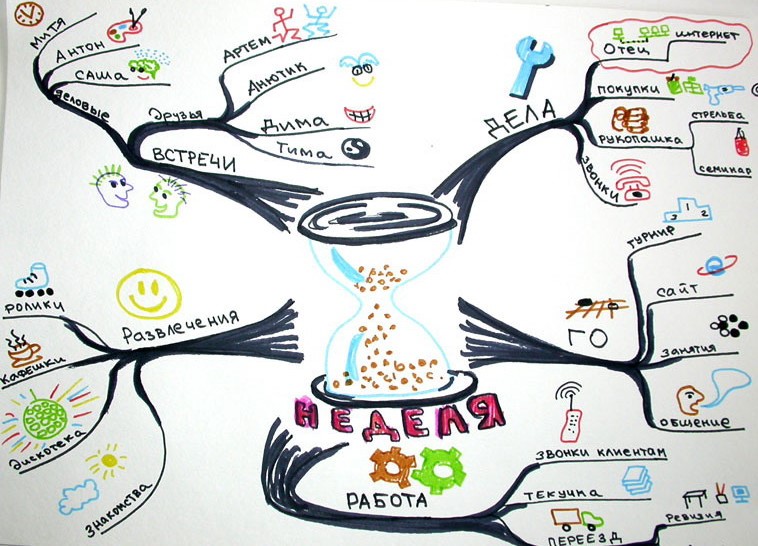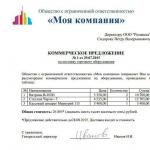Lesson 5
The final lesson of our self-education training was not chosen by chance. Having mastered the previous material, you already know what self-motivation is and how you can motivate yourself, what self-organization is (here, by the way), and organized, you also know how to search for the data you need and independently build a training plan. Of course, all this information is of great importance, and without it it is quite difficult to make the process of your own learning. But this knowledge alone will not be enough, because. you need to understand exactly how you will be engaged, or rather: what techniques and methods of effective self-study can generally be used?
Compare this to having the car you've always dreamed of: you get behind the wheel, but you don't know how to drive it at all - as a result, it will remain just a beautiful thing in the garage. To use it - to go to work, on business and on vacation - you need to be able to drive. Just this lesson will teach you how to drive that self-education car that you have got after studying the first four lessons.
Below we will talk about the most effective techniques and methods of self-study: note-taking, mnemonics and mental maps.
Note-taking. Essence and criteria
As a rule, note-taking is usually understood as a special form of organization of the studied text and a new genre of its presentation, which are formed after processing the information available in it. Interpreting this in simpler words, the abstract is the text that you have after writing down the data of interest in your notebook. In many cases, the abstract is the main guide for students during their preparation for exams, tests, seminars, as well as when writing essays, term papers and theses.
What is an outline for?
By and large, the abstract is necessary for the following purposes:
- Processing of any information and giving it a new form, type and form
- Highlighting in oral and written speech the most important and necessary for solving problems of an educational or scientific nature
- Creation of a conceptual or structural model of an actual problem
- Simplification
- Facilitate the acquisition of specific terminology
- Accumulation of information to create more complex works, for example, reports, abstracts, diplomas, dissertations, articles, books, etc.
Any abstract should involve drawing up a plan, fixing abstracts and extracts, be logical in terms of internal content, include main provisions, conclusions, evidence and facts, and reflect the personal attitude of its compiler to the subject being studied. In addition, the abstract can be used not only by its author, but also by other people.
The main provisions of the abstract
The abstract, if it is for serious purposes, should always reflect the following:
- Subject of study
- Facts and statements concerning the subject of research
- Ways to prove facts and statements related to the subject of research
An important component of note-taking is the rejection of verbosity, a large number of quotations and the preservation of style, if this is contrary to. It is equally important that the note taker be able to highlight the main thoughts.
The main thoughts, ideas and theses, in turn, are determined by the task of the note-taking process itself. Absolutely any element of the content can serve as such, for example, categories, concepts and their interpretations, laws and their formulations, events and facts with evidence of their truth, etc. These are all main positions, which can either be given the form of quotations, or they can be written out arbitrarily, using their own words.
The note-taking process is also distinguished by the fact that all kinds of signal designations can be used, which increase the information content of the compressed information. These can be highlights, underscores, exclamation or question marks, frames, arrows, checkmarks, etc. Each person can have their own notation, through which data is displayed not verbally, but conditionally symbolically.
To reduce the abstract and compress information, you can use various abbreviations - abbreviated words and phrases and insert signs instead of some words, for example, instead of the word “more”, you can insert the “>” sign. And the information content itself can be increased by using bright colors, serial numbers, numbers, Roman and Arabic letters.
It is allowed to insert data into the abstract from other sources, which can be done in order to compare, generalize, prove, etc. And a special role in the synopsis is played by one's own judgments, i.e. personal assessments of the note-taker, his attitude, agreement or disagreement with something that can be expressed in verbal or symbolic designations.
It is advisable to leave some free space in the abstract (lines or fields) where you can make notes, as well as use color schemes for especially important places. Data must be entered not in “solid” form, but in the form of columns. You can abbreviate words, but you should not abuse this, although if you make a summary for yourself and understand exactly which sign and which abbreviation means what, you can use abbreviations and signs in the amount you see fit.
It is also important to note that note-taking is a serious work with words, in which basic (supporting) terms and concepts are selected that reflect the essence and features of the topic or problem being studied. If any words and terms turn out to be incomprehensible, then they certainly need to be worked out with a reference book or dictionary, thereby expanding your vocabulary and gaining new knowledge. You can even make your own small dictionary or fix the definitions right in the abstract, not forgetting to indicate the source of the information.
So, we figured out the main provisions of the abstract, thanks to which the process of taking notes became much clearer and easier. But let's still summarize this topic more briefly and concisely.
Rules for a good abstract
The fundamental property of a good synopsis in general is its longevity and relevance. Practice shows that a competent summary can be no less important than the same lectures or even books, because it is able to immediately refresh the necessary information in memory and suggest something.
The quality of the abstract is determined by the purpose of its creation and purpose. Based on this, the following rules for a good abstract can be distinguished:
- The abstract should be brief (it is recommended to outline so that the abstract is no more than 1/8 of the information from the original)
- The abstract should be understandable, clearly structured (this ensures its readability, high speed of learning and understanding of the structure)
- The abstract must be scientifically correct (meaning the content of relevant and scientifically based information)
- The abstract must be individual (it must contain the author's own judgments, symbols and signs)
- The abstract must be targeted (it is necessary to clearly record the data, indicate pages and special notes)
Thus, taking into account all the parameters considered in the work, you can draw up a competent and high-quality summary that will serve well not only for you, but also for people who will have the opportunity to familiarize themselves with it. By the way, you can read additional interesting material on the topic of note-taking.
The next section of our lesson will be mnemonics - special techniques that allow you to remember absolutely any information. Their difference lies in the fact that you do not need any notes and other third-party sources to reproduce the data - only your memory and that's it.
Mnemonics. Essence, methods, examples. Memory exercises
Mnemonics are special techniques and exercises that allow you to memorize any information and. Moreover, they can be used not only in education, but also in any other area of life: at work, on vacation, when traveling, when reading books, etc. In addition, they help to clearly understand what type of information (text, exact data or images) is most suitable for a particular person to remember.
But let's talk a little more about the topic of why and who needs mnemonics - believe me, having successfully applied them for training, you will begin to use them everywhere.
The value of mnemonics in human life
Everyone knows that today each of us simply needs to memorize arrays of accurate information, especially when it comes to learning, but out of habit we write data in notebooks, organizers, gadgets, etc. If, however, you accustom yourself to write the necessary information into your brain, you can, firstly, from third-party objects, and secondly, at any time, access the data that we need.
For those who study, mnemonics are simply invaluable, because they allow you to remember everything you need, and then read it from your memory. Information can be remembered for as long as you need. So if you become an expert in any area, with mnemonics you will be able to do it much faster. And you will always be 100% ready for tests and exams.
And if we touch upon another aspect of education - not apprenticeship, but teaching, then mnemonics are simply invaluable here - just imagine a teacher who does not use notes, textbooks and reference books at all, but takes all the information out of his head! Agree, being such a teacher or dealing with him is much more pleasant.
It is the same in the professional sphere - when dealing with a large number of people and information in the process of working or doing business, a person using mnemonics will be much better at remembering names, contacts, positions, addresses, phone numbers and other data related to people and projects.
Mind maps are a very effective method of working with data, but it is such only when a person knows how to not only use it, but also correctly compose it. So let's see how this is done?
How to make a mental map?
The process of making a mental map is extremely simple. It consists of several stages:
- First you need to take a sheet of paper (you can connect several) and write in the center the main topic (problem), for which the map is created, enclosing it in a closed loop.
- Then, from the central topic (problem), draw the branches associated with it. These branches should lead to keywords.
- Further, the map should be expanded by adding sub-branches with other keywords to the previously drawn branches. This should continue until the topic is exhausted, i.e. until all its main points and features are indicated.
And again, we simply could not help but present you with an example of a wonderful mental map:

Here you have made a mental map. But what to do with her? Are there any special features when working with it? We can assure you that there are some - we will talk about them further.
How to work with mental maps?
Working with mental maps is based on a number of rules, which, of course, must be observed, because. the efficiency and productivity of the entire learning process will depend on this, despite the fact that the technique of working with mental maps may seem understandable at the level.
Rules for working with mental maps
Use the following rules when working with mind maps:
- There should be only one word per branch. This saves both time and space, and makes the map more readable. It may seem that other, seemingly important, words can be forgotten, but they will not be forgotten if you take the most memorable and vivid as keywords.
- The mental map is read more conveniently if the sheet is horizontal.
- Keywords should be written in clear block letters and in black.
- Keywords should be placed directly on relationship lines and exclude boxes.
- The length of the line on which the keyword is written must be equal to its length, and the line itself must be continuous.
- For the main branches, it is better to use different colors to avoid visual merging of the entire map.
- The further away a keyword is from the main topic, the smaller its font should be.
- Branches should be evenly spaced; you should not leave empty spaces, but you do not need to place branches too close to each other.
- You can use symbols, signs and pictures - this is allowed both for the main topic and for branches.
- When compiling a complex mental map, at the initial stage, you can make a miniature with all the main elements in order to determine the structure.
You should be aware that mind maps are a unique way of capturing data, as opposed to a text record, diagrams, and lists. Their main difference from other imaging methods is that they activate memory. While abstracts, lists, tree diagrams, etc. very monotonous, mind maps include a lot of ways to activate perception, from different line weights and font sizes to the use of images and symbols. The proposed technique not only contributes to the organization and ordering of information, but also to its better perception, understanding, memorization and association building.
Even if you are busy reading a textbook or a book, you can create a mind map and see for yourself how powerful it is for making sense of what you read. And what about the fact that the map you created can be useful in a few months and even years? In addition, mind maps can be used to gain an in-depth understanding of complex and unusual topics, displaying large amounts of data in a concise and concise manner.
And finally, I would like to give a few more recommendations on the use of mental maps.
First, strive to ensure that creating a mental map gives you pleasure. Make the card unusual, beautiful, colorful - use imagination and creativity. Naturally, all this should depend on your tasks and goals.
Secondly, take the time to create a mental map, especially at the first stage. While there is no experience yet, it may take you several hours to create a really high-quality mental map, but over time you will do it faster and faster.
Thirdly, remember that any mental map is not just a reflection of your thinking process, but also its diagnostics. Form, appearance, structure, neatness - all this is a reflection of your attitude to the matter and the subject being studied, as well as your understanding of what you are studying.
And, fourthly, draw mental maps with your hands, without resorting to the use of graphic editors, programs, etc. The fact is that the creation of mental maps, or, as it is also called, mind mapping, is a creative process, and should help organize your thinking, which computer programs cannot provide. Drawing with your hands, you will always see how correct your thought process is, what are your advantages and disadvantages, what can be biased and what needs to be improved.
Now you have all the knowledge that will allow you to structure the process of self-study in such a way that you can get the most out of it and learn everything that you think is necessary. But never forget that practice is the “head” of everything. Therefore, get down to business and apply new knowledge,.
Test your knowledge
If you want to test your knowledge on the topic of this lesson, you can take a short test consisting of several questions. Only 1 option can be correct for each question. After you select one of the options, the system automatically moves on to the next question. The points you receive are affected by the correctness of your answers and the time spent on passing. Please note that the questions are different each time, and the options are shuffled.





